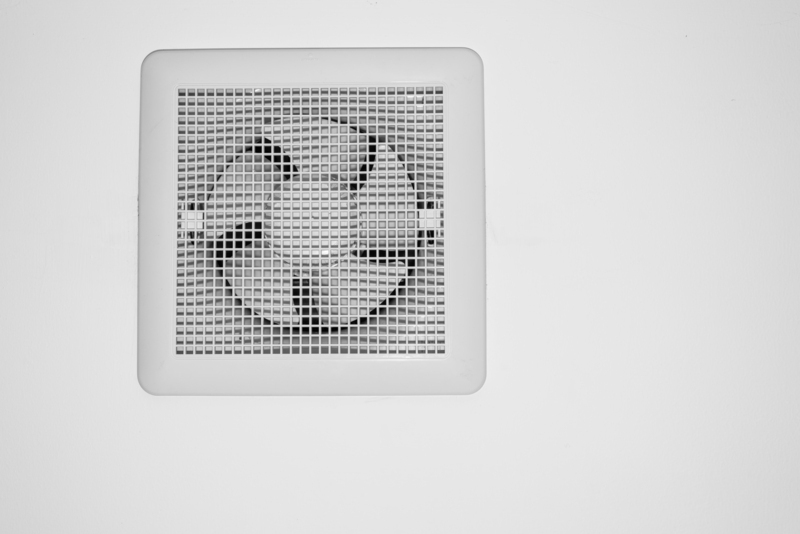Grease Be Gone: Master the Art of Cleaning Enamel Oven Trays
Posted on 01/10/2025
Grease Be Gone: Master the Art of Cleaning Enamel Oven Trays
Are you tired of fighting stubborn, sticky grime on your enamel oven trays? Whether you're a home baker, a weekend roast enthusiast, or someone who just loves crispy oven-baked meals, learning how to master the art of cleaning enamel oven trays is essential for a sparkling, hygiene-friendly, and long-lasting kitchen. In this comprehensive guide, we'll reveal expert-approved methods to keep your enamel trays spotless--goodbye, grease!

Why Proper Enamel Oven Tray Cleaning Matters
Enamel coated oven trays are prized because they distribute heat evenly and resist sticking--until, of course, a layer of caked-on grease builds up. Beyond just appearance, cleaning your trays regularly ensures:
- Food safety: Old, burnt-on grease can harbor bacteria.
- Optimal cooking results: Clean trays bake evenly, boosting flavor.
- Longevity: Properly maintained trays resist rust, chipping, and corrosion.
- Effortless cleaning over time--the more often you clean, the less scrubbing you'll need.
Let's unveil the secret techniques and tips to clean enamel oven trays like a pro!
Understanding Enamel Oven Trays
Enamel is a vitrified, glass-like coating fused at high temperatures to metal trays, giving them a shiny, durable, and stain-resistant finish. While enamel is designed to handle high heat and resist food stains, it can still fall prey to baked-on grease and carbon if not cleaned promptly.
Common challenges with enamel-coated trays include:
- Burnt-on residues from sugary sauces and fats
- Discoloration after repeated use
- Scratches and chips from abrasive tools
- Oven-baked odors caused by old grease
Ready to learn the best methods?
Essential Supplies for Cleaning Enamel Oven Trays
Before you start scrubbing, gather the right supplies! When cleaning enamel, it's crucial to use non-abrasive products to preserve its finish. Here's what you'll need:
- Soft sponges or microfiber cloths
- Non-abrasive brushes with gentle bristles
- Mild dish soap
- Baking soda
- White vinegar
- Lemon juice (for natural deodorizing and cutting grease)
- Warm water
- Plastic spatula for loosening stubborn bits
- Paper towels for drying
- Optional: specialized oven tray cleaners (check for enamel-safe labels)
Step-by-Step Methods for Cleaning Enamel Oven Trays
Quick Daily Clean
- Let the tray cool: Never attempt to clean an enamel tray while it's hot; rapid temperature changes can cause cracks.
- Rinse under warm water: Loosen any fresh residues using a soft sponge and mild dish soap.
- Wipe dry: Use a microfiber cloth or paper towel to prevent water spots or streaks.
Removing Light Grease and Stains
- Make a cleaning paste: Mix baking soda and a little water to form a spreadable, thick paste.
- Apply the paste: Spread it evenly on greasy or stained areas. Let it sit for 15-30 minutes.
- Gently scrub: Use a non-abrasive sponge or brush in small, circular motions.
- Rinse thoroughly: Remove any residue by rinsing with warm water and dish soap.
- Dry completely: Prevent water marks and rust by drying with a soft towel.
Tackling Stubborn, Burnt-On Grease
- Soak the tray: Fill your sink with hot water, add a generous squirt of dish soap, and submerge the tray for at least an hour (overnight for heavy buildup).
- Sprinkle baking soda: While the tray is still damp, sprinkle baking soda over any remaining stubborn patches.
- Add vinegar: Pour a small amount of white vinegar directly onto the baking soda. The fizzing action helps lift grime.
- Let it bubble, then scrub: Give it 10 minutes, then use a soft brush or sponge to remove residue.
- Rinse, wash, and dry: Finish with a final soapy rinse and thorough drying.
Powerful Natural Degreasing: Lemon & Salt
For eco-friendly cleaning that leaves your enamel oven trays shiny and deodorized:
- Squeeze lemon juice over tough spots and sprinkle with coarse salt.
- Let it sit for 20 minutes, then scrub with the cut side of the lemon--its natural acids and salt crystals work together as gentle abrasives.
- Wipe away residue with a damp cloth, rinse, and dry.
Deep Cleaning for Enamel Oven Trays
Sometimes, a deep clean is essential--especially if you're dealing with months of baked-on grease or preparing for a big family gathering. Here's how to give your enamel trays a deep clean:
- Remove surface debris: Scrape off loose food using a plastic spatula.
- Create a soaking bath: In a large basin or bathtub, dissolve 1/2 cup baking soda in hot water. Add a splash of vinegar for extra oomph.
- Submerge and wait: Place your tray in the bath and soak for at least 6 hours, or overnight.
- Scrub gently: Use a non-abrasive brush to scrub away softened build-up.
- Final rinse: Wash with dish soap and thoroughly dry.
Extra Tip: Use Dishwasher if Tray Is Dishwasher Safe
Many enamel trays are dishwasher safe. However, check your manufacturer's instructions--harsh detergents or high heat cycles can cause some enamel finishes to dull over time.
What Not to Do: Enamel Damage Risks
To protect your enamel trays and keep them looking new:
- Never use metal scouring pads or sharp scrapers--they can chip the enamel coating.
- Avoid harsh chemicals like oven cleaner, bleach, or ammonia, which may degrade enamel.
- Steer clear of sudden temperature shifts: Placing a hot tray in cold water can cause cracking.
- Don't use abrasive powdered cleaners; even seemingly mild abrasives can dull enamel.
Preventing Grease & Stains on Enamel Oven Trays
Why clean more than you have to? With a few smart kitchen habits, you can minimize future mess and keep enamel trays grease-free:
- Line trays with baking parchment or a silicone baking mat before use--especially for sticky or cheesy foods.
- Wipe up spills immediately after cooking, when the tray is warm but not hot.
- Avoid cooking under direct oven flames which can quickly burn-on sugars and oils.
- Regular quick cleans are faster (and far more pleasant) than infrequent deep scrubs.
- Rotate your trays: Don't always use the same one for the messiest oven jobs--it'll wear unevenly.
Expert Answers: Your Enamel Oven Tray Cleaning Questions
Q1: Is it safe to use vinegar on enamel oven trays?
A: Yes, white vinegar is safe for most enamel surfaces, and excellent for dissolving minerals and light grease. Always rinse thoroughly to avoid any lingering smell or increased acidity.
Q2: My tray is stained even after cleaning. Help!
A: Persistent stains may require repeated baking soda paste treatments, or longer soaking. Some discoloration--especially from sugary marinades--may be permanent but is usually cosmetic.
Q3: Can you use commercial oven cleaners on enamel trays?
A: Most manufacturers advise against harsh commercial oven cleaners, as these can damage enamel's glossy finish. Always confirm that your cleaning product is labelled safe for enamel or ceramic.
Q4: How do I remove burnt sugar or caramel from enamel trays?
A: Soak the tray in very hot water for a few hours, then apply a thick baking soda paste and let it sit. Use the soft side of a sponge and repeat as necessary. Never try to pry hardened caramel with a metal tool--you risk chipping the enamel.
How to Restore the Shine to Dull Enamel Trays
If your oven trays have lost their luster, try this simple method:
- Mix equal parts baking soda and water until you have a creamy paste.
- Apply over the tray and let sit for 10 minutes.
- Buff gently with a microfiber cloth using circular motions.
- Rinse and dry thoroughly.
When Is It Time to Replace Your Enamel Oven Tray?
Even with the best care, enamel trays can become chipped, cracked, or rusted over the years. Replace your tray if:
- Large chips expose the base metal (which may rust or react with food)
- Cracks develop, threatening the tray's integrity
- Major stains or odors persist after deep cleaning, indicating the tray is too worn

Conclusion: Mastery Achieved--Enamel Oven Trays as Good as New!
You've now mastered the art of cleaning enamel oven trays! With regular care, gentle techniques, and a few kitchen smarts, your trays will resist grease, scorch marks, and ugly buildup for years. Not only will your oven trays look better, but your meals may taste even better--free from burnt-on residue and lingering smells.
Remember: A little effort after each use pays off with fewer headaches (and less scrubbing) in the future. Make cleaning your enamel oven trays as integral to your cooking routine as preheating your oven, and enjoy the fresh, hygienic results.
Summary: Grease-Free Living, One Oven Tray at a Time
- Use non-abrasive tools and cleaners to prolong your tray's lifespan.
- Harness the power of baking soda, vinegar, and lemon for natural cleaning and deodorizing.
- Prevent future mess with smart tray-lining and prompt wipe downs.
- When in doubt, consult your tray's manufacturer's instructions for additional care tips.
*Ready for spotless, gleaming enamel oven trays? Grease truly be gone! Share your best cleaning stories, tips, and questions in the comments below!*





